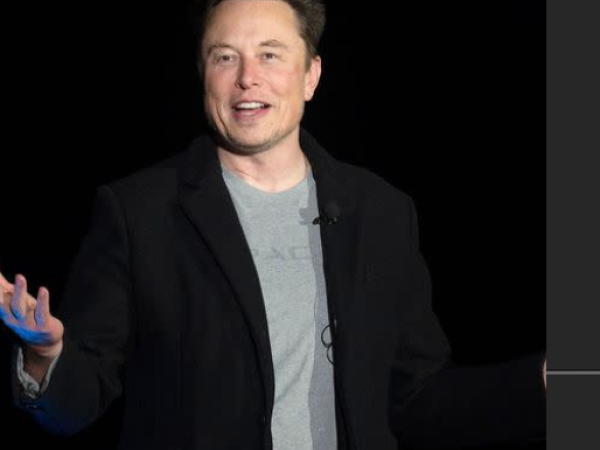Covered in red tattoos that mimic jaguar spots, an indigenous man logs on to TikTok from the remote Brazilian Amazon village of Nova Esperança and bursts out laughing at a video titled “If I Were Rich.”
(See: DirecTV has already surpassed the million customer barrier).
The Matsés people took a leap to modernity with the Starlink internet, a connection through the constellation of satellites of the American billionaire Elon Musk.
Thanks to local government funding, The signal recently reached the Javarí Valley, where the most isolated indigenous communities of the Amazon jungle live.
The residents of Nova Esperança gathered to see the installation of the antenna and the solar panel that feeds it. The process took less than 30 minutes, and workers used a ladder to position the equipment on the roof of the school.
More than 500 kilometers and three days by canoe from any urban area, the 200 hInhabitants of this village will be able to enjoy free Internet connection, a privilege in this region of northwestern Brazil, on the triple border with Peru and Colombia.
“Now we do have dreams for the future: to be able to train civil engineers, geologists, architects, lawyers, nurses (…) among other possibilities,” Cesar Mayuruna, the only indigenous councilor from Atalaia do Norte, the closest municipality, told AFP.
But the connection, which already has some 50,000 users throughout Brazil, worries those who watch over ancestral traditions. It could also serve criminals who exploit indigenous land without permission.
(See: They give standby credit to Tigo to expand mobile broadband service).
Elon Musk Internet
Jim Watson. AFP / Starlink
The Matsés are one of the seven contacted peoples of the Javarí Valley, the second largest indigenous reserve in Brazil where there are still at least 19 indigenous groups living in voluntary isolation.
A nomadic and warrior people, they entered into communication with modernity in the 1970s. Today they continue to wear their bone and ivory facial ornaments, hunt and fish despite having adopted Western attire.
The oldest have tattoos on their faces. The inhabitants who have a telephone, mostly young people who frequent the city of Atalaia, connect to the network for the first time. Raúl, the cacique, also has a cell phone.
He uses WhatsApp, but “only for audio messages, not text”explains his son Assis, who uses several applications.
Thanks to the Internet, the Matsés of the area will be able to communicate without having to travel days and nights in canoes.
For Bene Mayuruna, President of the General Organization of the Matsés People (OGM), means being able to be in Atalaia do Norte, where he carries out his political responsibilities, without losing contact with his family in the town.
“Nova Esperança is very far, access is difficult, communication too”write down.
(See: We are Internet, the company that is after the connectivity of cities).
Apart from education and some official proceduress, the Internet should also facilitate the work of SESAI, the indigenous health agency that serves almost all Javari communities..
In an emergency—often snakebite—Starlink will provide a more reliable link than the single station in the village.
“Sometimes the radio does not work, there is no battery, or solar panel. So it is a great advance“, celebrates Fabio Rodrigues, SESAI nurse.
But some Matsés concerned with traditions remain suspicious. As soon as the antenna was installed, the elders called a meeting to discuss the rules of use.
They decided a total ban on the service at night, with exceptions for teachers, health personnel and community leaders.
They also reserved the right to turn off the signal on days of hunting, fishing and tribal ceremonies.
“The Internet makes youth not interested in traditional activities, then they don’t help when their mothers work in the fields (farms). They don’t go because of the cell phone, because they watch videos and that is very worrying.”says Bene Mayuruna.
On the other hand, The community hopes that going online will bring safety to the dangerous Javarí River, where illegal fishermen, drug traffickers and pirates regularly attack Aboriginal people.
But criminals are no strangers to Musk’s technology either: between February and July, the Brazilian environmental police (Ibama) seized 11 Starlink kits from illegal miners on the land of the indigenous Yanomami, some 1,400 kilometers northeast of Javarí.
The connection also suffers from maintenance problems, with generators and solar panels the only sources of power.
The municipality of Atalaia do Norte has promised to equip the 62 villages in the Javarí region, with almost 6,000 people, before the end of the year. With less than two years to go until the next local electionsthe network also enters the local political game.
Meanwhile, some Matsés are wondering what interests Musk has in the Amazon. Because if they have understood anything about Western society, says a village elder, it is that “with whites, nothing is free.”
(See: Connecting the Amazon, the objective of Colombia and Brazil).
AFP













![[Img #73262]](https://thelatestnews.world/wp-content/uploads/2024/07/The-era-of-artificial-intelligence-in-digital-marketing-in-Spain-300x200.jpg)